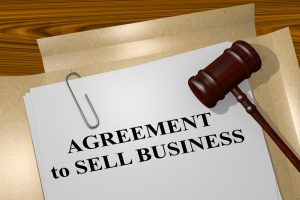Owners ask all the time, “Why Plan Now?” “I’m not planning to leave my business for years. I feel good, and I still enjoy my business. I’m not sure what else I would do. Besides, if my company is only going to sell for two or three times earnings, I can make more than that by sticking around.”
All are valid arguments. Baby Boomers, the youngest of whom turned 55 this year, are working longer and are more active well into their 60s and often into their 70s. The term “next career” describes the growing portion of the population who are choosing another full-time activity after leaving their jobs or businesses.
Why Plan Now?
That said, there are good reasons why every Baby Boomer business owner should have a documented exit plan.

- A plan is not an action. As the late, great Yogi Berra said, “If you don’t know where you are going, you may wind up somewhere else.” The process of deciding what your ultimate outcome should be gets you mentally prepared, but implementation only starts when you say so.
- It will focus your efforts. Say, for example, you decide that ultimately you want to sell to your employees. Your investments in hiring and training will look very different than if you plan to sell to a large competitor who would shutter your operation.
- It will make you a better business owner. Thinking through the things that drive value in your business, (employees, products, and customers,) will inevitable highlight what could be improved. You will look at your business through a buyer’s eyes. That lends a whole new perspective.
The first four parts of this series dealt with various exit scenarios. This is about your timing.
How to Start
There’s a ton of resources both in past articles on this site (indexed by topic) and in our free library of planning tools and educational materials at www.YourExitMap.com. Many Financial Planners, Bankers and CPAs are getting one of the certifications in exit planning (Either the Certified Exit Planning Advisor – CEPA or the Certified Exit Planner- CExP.) That equips them to have a broader conversation that just focusing on their specialty.
Chapters are springing up of professionals who specialize in exit planning. Booth the Exit Planning Exchange (XPX) and the Exit Planning Institute (EPI) regularly offer seminars for owners considering their exit strategy, Between the two there are chapters in about 40 US cities.
Try putting the term “Exit Planning” in an Amazon book search. You’ll have a choice of about 25 titles.
Finally, there’s my standard (if somewhat cliched) answer to the question “Why plan now?”
Because sooner or later, every owner leaves his or her business, whether voluntarily or otherwise. It’s only the biggest financial event of your life.
 At one end of the spectrum we’ll say you want to exit the business in the next thirty to sixty days. That’s probably enough time to draw up a purchase agreement and transfer ownership. The payment for the business would be entirely in an installment note from your workers. Rapid exit, but maximum probability that you will never see the entire purchase price.
At one end of the spectrum we’ll say you want to exit the business in the next thirty to sixty days. That’s probably enough time to draw up a purchase agreement and transfer ownership. The payment for the business would be entirely in an installment note from your workers. Rapid exit, but maximum probability that you will never see the entire purchase price. Its especially important to get spouse signatures on these agreements. Valuations and agreements between family are fine, but an outsider (especially an ex-spouse) may not be as amenable.
Its especially important to get spouse signatures on these agreements. Valuations and agreements between family are fine, but an outsider (especially an ex-spouse) may not be as amenable. Business Brokers can be cynical about their clients. They commonly complain that the best businesses sell through their accountants, bankers, attorneys, or word of mouth. Their listings consist mostly of the “Dismal Ds,” (Death, Disease, Disaster, Divorce, Declining sales, Dissention among partners, Disinterest, etc.) While this is an exaggeration, it’s true that the better shape your business is in, the more likely it is to sell easily.
Business Brokers can be cynical about their clients. They commonly complain that the best businesses sell through their accountants, bankers, attorneys, or word of mouth. Their listings consist mostly of the “Dismal Ds,” (Death, Disease, Disaster, Divorce, Declining sales, Dissention among partners, Disinterest, etc.) While this is an exaggeration, it’s true that the better shape your business is in, the more likely it is to sell easily.